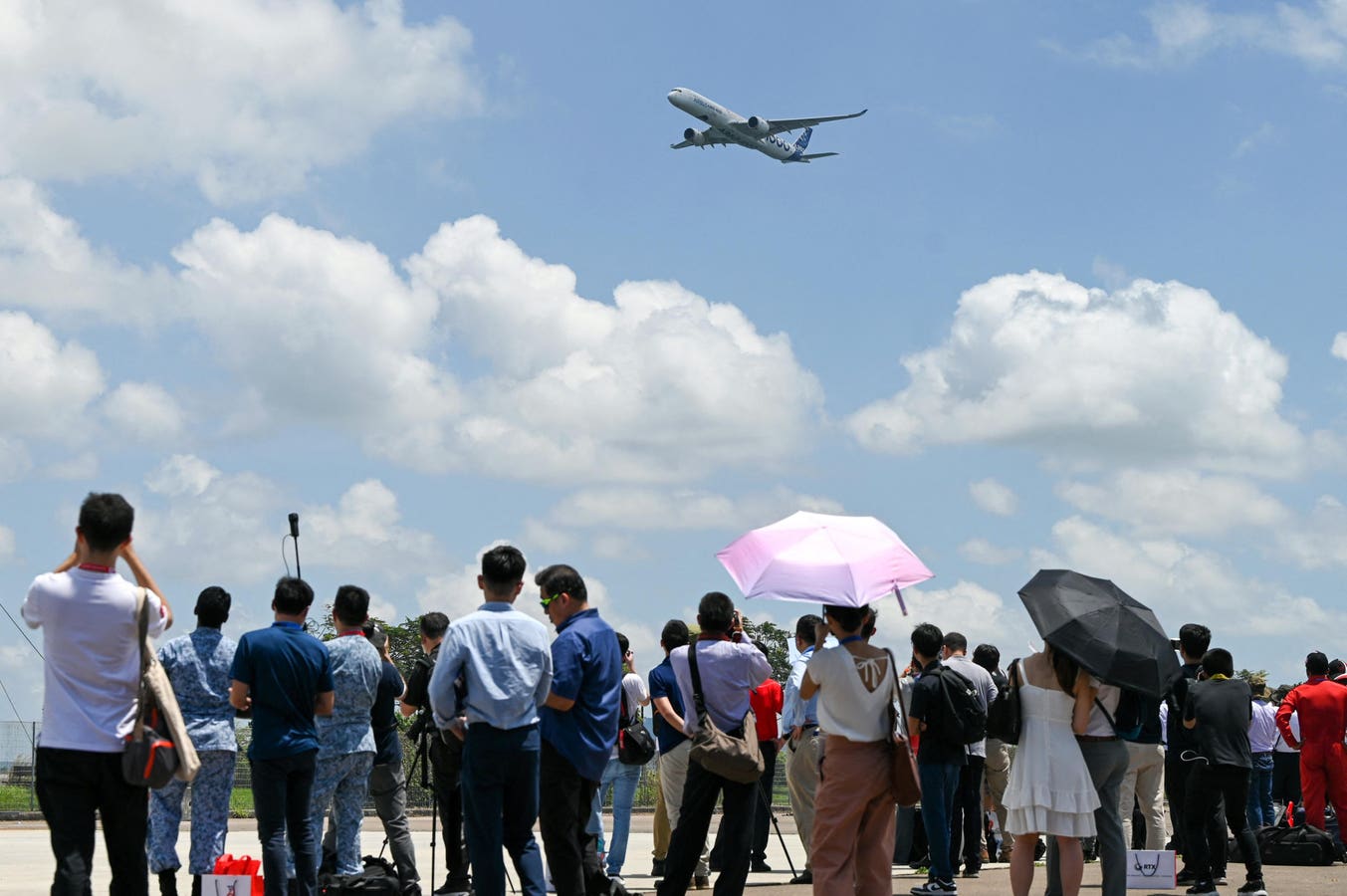After its attention-grabbing appearance at the Singapore Airshow, the Commercial Aircraft Corporation of China continues its promotional tour of Southeast Asia featuring the C919, alongside COMAC’s ARJ21 regional jet. The aircraft made their second appearance at the Vietnam Airshow this week.
The C919, poised to compete in the same operational segment as the Boeing
BA
COMAC’s intensive six-country tour includes further stops in Laos, Cambodia, Malaysia, and Indonesia over the next two weeks, aiming for COMAC’s market expansion beyond China.
C919 Branching Out Beyond China
The C919 has secured over 1,000 orders from Chinese carriers and lessors. Though it is currently only certified by China’s aviation authority, COMAC plans to promote the C919 globally and seek certification from the European Union Aviation Safety Agency this year.
Since the program launch, COMAC has produced four C919 jets, all flying for China Eastern Airlines. The planes service the airline’s major domestic routes and have transported over 130,000 passengers. The first C919, registered as B-919A and operated by China Eastern, was a static display at the Singapore Airshow, showcasing the aircraft’s cabin.
COMAC announced a new order of 40 C919s in Singapore, notably from Tibet Airlines.
The ARJ21 has been in commercial service since June 2016, with 127 aircraft delivered and over 11 million passengers transported. TransNusa operates two ARJ21s in Indonesia, connecting Jakarta with other cities and safely carrying over 100,000 passengers.
COMAC projects a significant rise in the Asia-Pacific demand for passenger jets, estimating an increase from 3,314 to 9,701 aircraft over the next twenty years. The company is proactively preparing to meet this growing demand.
Boeing’s Commercial Market Outlook 2023 predicts annual fleet growth of 6.9% in Southeast Asia, forecasting delivery of almost 4,300 airplanes over the next two decades.
Rising Asia Pacific Airline Demand Sparks Interest In C919
Members of the Association of Asia Pacific Airlines were optimistic about the future of air travel in the region during the 67th Assembly of Presidents, held in Singapore last November. Despite the challenging economic conditions marked by inflation and strong monetary policies, AAPA’s airlines have experienced a resurgence in air travel demand.
The number of international air passengers in the Asia Pacific region climbed to 79% of the levels seen before the pandemic in September of last year. The region trails slightly behind others because of slower border reopening post-COVID. Nonetheless, the appetite for air travel is strong. Airlines reported a 171% surge in international passenger traffic in the first nine months of 2023 compared to the same period in 2022.
The growth in available seat kilometers, a measure of seat capacity, has been modest due to supply chain limitations. The airlines recorded a 130% increase in the initial nine months of 2023. However, airline load factors, a measure of how full aircraft fly, had rebounded to pre-pandemic levels. High demand for air travel within the region and capacity constraints kept airfares high, but this did not discourage bookings. Despite global economic pressures, airline leaders at the event noted a notable consumer shift from purchasing goods to spending on services, including air travel.
China, which previously represented 20% of the region’s international traffic, was operating at just 54% of its 2019 traffic levels as of September 2023. However, the recovery rate for the Asia Pacific region, excluding China, was significantly higher at 87% of pre-COVID levels. With Chinese travelers returning, airlines predict substantial growth for regional and global tourism sectors.
As Reuters reported, Subhas Menon, director general of the Association of Asia Pacific Airlines, said during the Singapore Airshow that airlines in the region were receptive, if cautious, about COMAC as a third aircraft option.
“I think people will take a second look because of all these delivery problems that Airbus and Boeing are having, but we have to be realistic because the C919 has not been certified by certain authorities, so the call to action is limited,” he said.
Airbus And Boeing Have A Vast Lead To Lose
The substantial order books of Airbus and Boeing combined dwarf those of COMAC. However, speaking to the media on the sidelines of the Singapore Air Show last week, Airbus commercial aircraft chief executive acknowledged the importance of the Chinese contender, as the Straits Times reported. “We fundamentally consider COMAC as a competitor in the future,” he said, with the caveat the aircraft will not “rock the boat in particular.”
“We certainly don’t want to stick our head in the sand,” Scherer added. “The cake is growing sufficiently for COMAC to want to compete.”
Gaining aircraft certification for the C919 outside of China might be a drawn-out process. However, Boeing needs time to address its safety management system and persuade the FAA that it can raise the 737 MAX production rate. Airbus has supply chain issues to resolve, which may also take time.
Airbus and Boeing claimed orders and commitments for larger jets at the Singapore Airshow. Vietjet Air signed a Memorandum of Understanding with Airbus to buy 20 A330-900 widebodies. Taiwan’s STARLUX Airlines signed a firm order for five advanced A350F freighters and three additional A330neo widebody aircraft.
Boeing announced an order from Thai Airways for 45 Boeing 787-9 Dreamliners at the Singapore Airshow, and Royal Brunei Airlines ordered four 787-9 Dreamliners.
COMAC’s larger jet C929 program is in the design stage and is still a far-off prospect. But, there is world enough, and time.
Read the full article here





